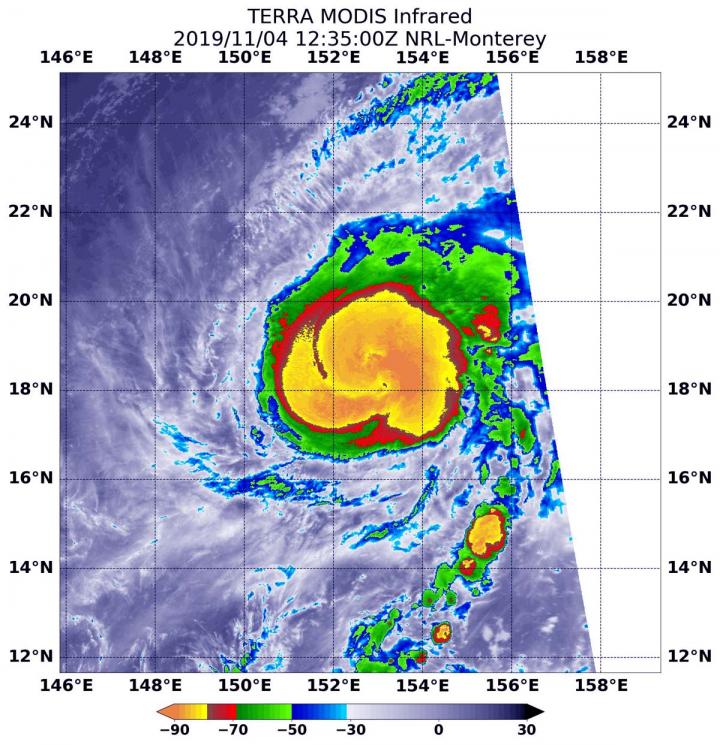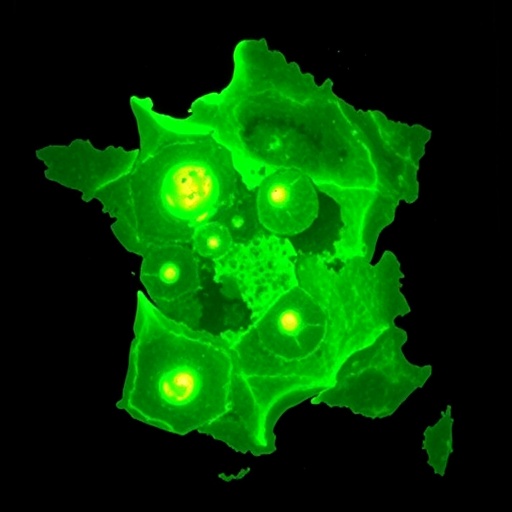
Credit: Credit: NASA/NRL
Typhoon Halong continued to strengthen in the Northwestern Pacific Ocean as NASA’s Terra satellite passed overhead. Infrared imagery from an instrument aboard Terra revealed very high, powerful storms with very cold cloud top temperatures circling the center as well as in a band of thunderstorms west of the center.
Halong developed on Nov. 2 from a low-pressure area designated as System 99W. The storm consolidated into a tropical storm later that day. On Nov. 3, Halong intensified further and became a typhoon.
Tropical cyclones are made of up hundreds of thunderstorms, and infrared data can show where the strongest storms are located. They can do that because infrared data provides temperature information, and the strongest thunderstorms that reach highest into the atmosphere have the coldest cloud top temperatures.
On Nov. 4 at 7:35 a.m. EDT (1235 UTC), the Moderate Imaging Spectroradiometer or MODIS instrument that flies aboard NASA’s Terra satellite used infrared light to analyze the strength of storms within the tropical cyclone. MODIS found those strongest storms in a very large area circling the center of circulation and in a thick band of storms west of center, where cloud top temperatures were as cold as or colder than minus 80 degrees Fahrenheit (minus 62.2 Celsius). NASA research has found that cloud top temperatures that cold indicate strong storms with the potential to generate heavy rainfall.
On Nov. 4 at 4 a.m. EDT (0900 UTC), Typhoon Halong had maximum sustained winds near 80 knots (92 mph /148 kph). It was located near latitude 17.9 degrees north and longitude 153.1 degrees east, about 381 nautical miles south of Minami Tori Shima, Japan. Halong was moving to the northwest.
Forecasters at the Joint Typhoon Warning Center expect Halong will move northwest, while strengthening further over the open waters of the Northwestern Pacific Ocean. Fortunately, Halong does not pose an immediate threat to land areas.
Hurricanes are the most powerful weather event on Earth. NASA researches these storms to determine how they rapidly intensify, develop and behave. NASA’s expertise in space and scientific exploration contributes to essential services provided to the American people by other federal agencies, such as hurricane weather forecasting.
###
By Rob Gutro
NASA’s Goddard Space Flight Center
Media Contact
Rob Gutro
[email protected]
Original Source
https:/




